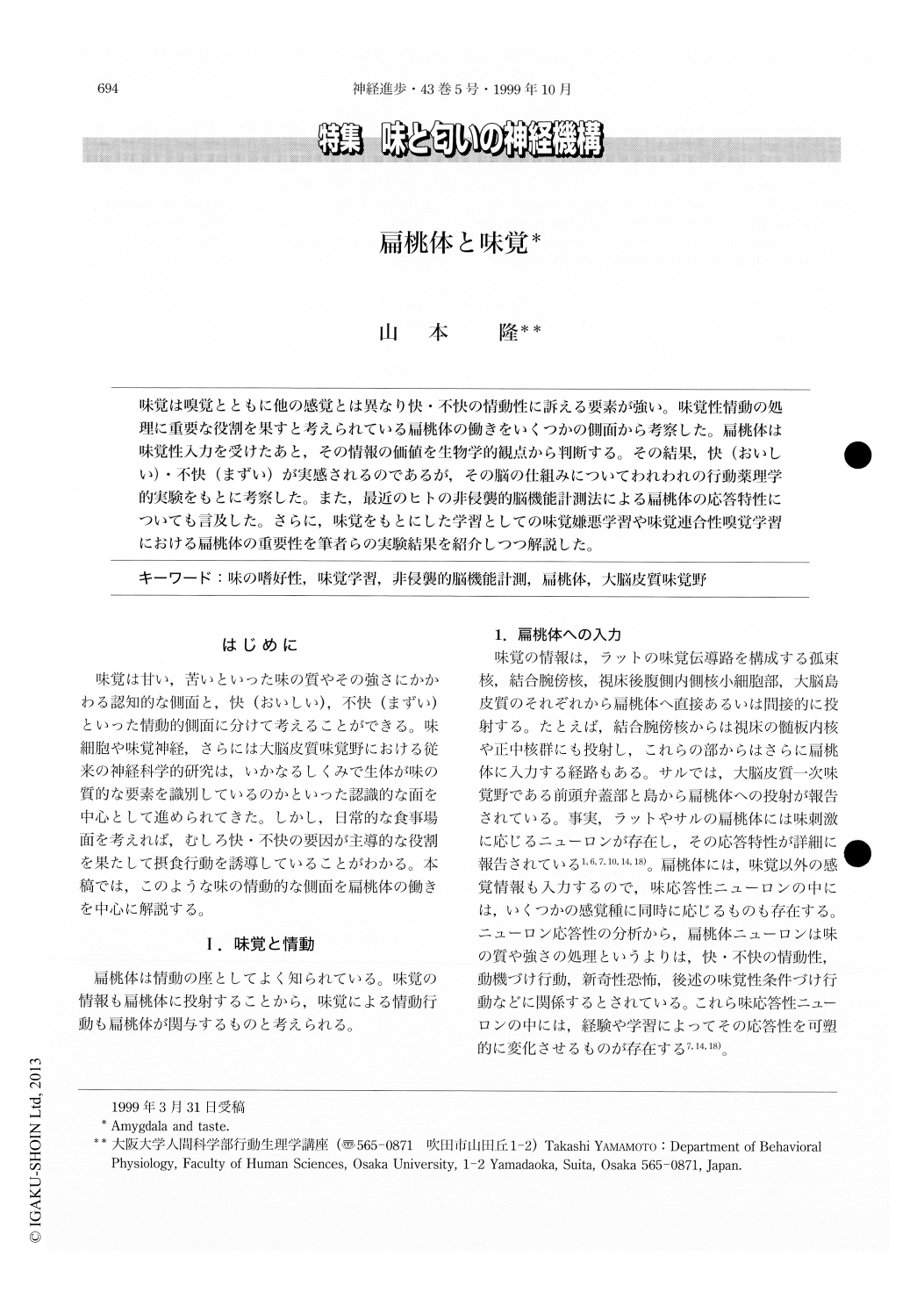Japanese
English
- 有料閲覧
- Abstract 文献概要
- 1ページ目 Look Inside
味覚は嗅覚とともに他の感覚とは異なり快・不快の情動性に訴える要素が強い。味覚性情動の処理に重要な役割を果すと考えられている扁桃体の働きをいくつかの側面から考察した。扁桃体は味覚性入力を受けたあと,その情報の価値を生物学的観点から判断する。その結果,快(おいしい)・不快(まずい)が実感されるのであるが,その脳の仕組みについてわれわれの行動薬理学的実験をもとに考察した。また,最近のヒトの非侵襲的脳機能計測法による扁桃体の応答特性についても言及した。さらに,味覚をもとにした学習としての味覚嫌悪学習や味覚連合性嗅覚学習における扁桃体の重要性を筆者らの実験結果を紹介しつつ解説した。
Our daily feeding behavior is largely guided by hedonic aspects of taste of food. This article describes the importance of amygdala in emotional, hedonic, motivational and learning processing of taste information. The amygdala receives taste inputs mainly from the solitary tract nucleus, parabrachial nucleus, thalamic and cortical taste areas in the rat, and also from the caudolateral orbitofrontal cortex in the monkey. There are neurons in the amygdala that respond to taste alone or to taste and other sensory stimuli. PET studies in humans suggest that aversive saline(1M) activates right side of the amygdala.

Copyright © 1999, Igaku-Shoin Ltd. All rights reserved.


